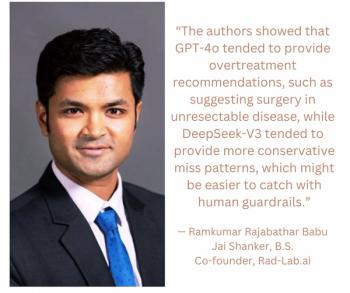
Interventional oncology evolves through collaboration
The Society of Interventional Radiology launched an interventional oncology task force (IOTF) last year to develop the emerging field. The task force sought to integrate research, education, clinical standards, practice building, and public outreach and put a face on interventional oncology in the U.S. and abroad. It also sought a strategic partnership between IRs and oncology specialists including clinicians, radiation therapists, and surgeons.
The Society of Interventional Radiology launched an interventional oncology task force (IOTF) last year to develop the emerging field. The task force sought to integrate research, education, clinical standards, practice building, and public outreach and put a face on interventional oncology in the U.S. and abroad. It also sought a strategic partnership between IRs and oncology specialists including clinicians, radiation therapists, and surgeons.
The IOTF convened for the first time at the 2004 SIR meeting. Members met again for strategic planning in February 2005 and presented their preliminary recommendations at this year's SIR meeting in New Orleans.
Efforts at the international level led to the first International Symposium on Image-Guided Therapy for Cancer in London in early May, when the first World Congress on Interventional Oncology was launched. The congress will convene next year at Lake Como, Italy. The SIR, the Cardiovascular and Interventional Radiological Society of Europe, and the American Society of Clinical Oncology cosponsor these events.
Before the IOTF came into being, the SIR's Research and Education Foundation called the first multidisciplinary meeting focused on interventional oncology in 2002. The panel featured prominent investigators from the National Cancer Institute, the National Institute of Biomedical Imaging and Bioengineering, and the Angiogenesis Foundation, among others. The group published the first research agenda in January 2004 (J Vasc Interv Radiol 2004;15:7-12).
The plan set out a five-year process to establish research models for treatment optimization, global standards for clinical trials, and interdisciplinary collaboration and dissemination of data to fuel further research. The researchers spotted potential hurdles, including clashes with corporate interests. They also recognized the need for guidelines that would not hamper technical or clinical progress.
Newsletter
Stay at the forefront of radiology with the Diagnostic Imaging newsletter, delivering the latest news, clinical insights, and imaging advancements for today’s radiologists.




























